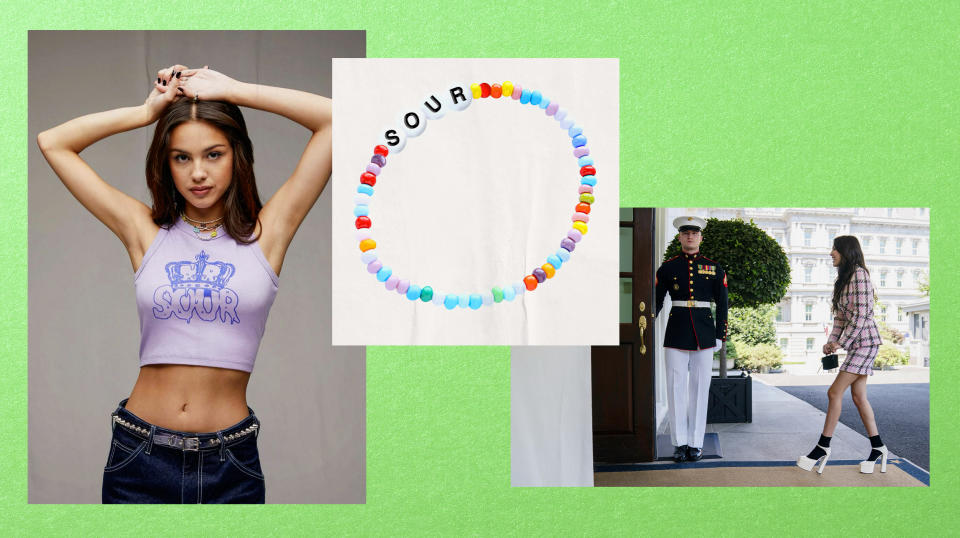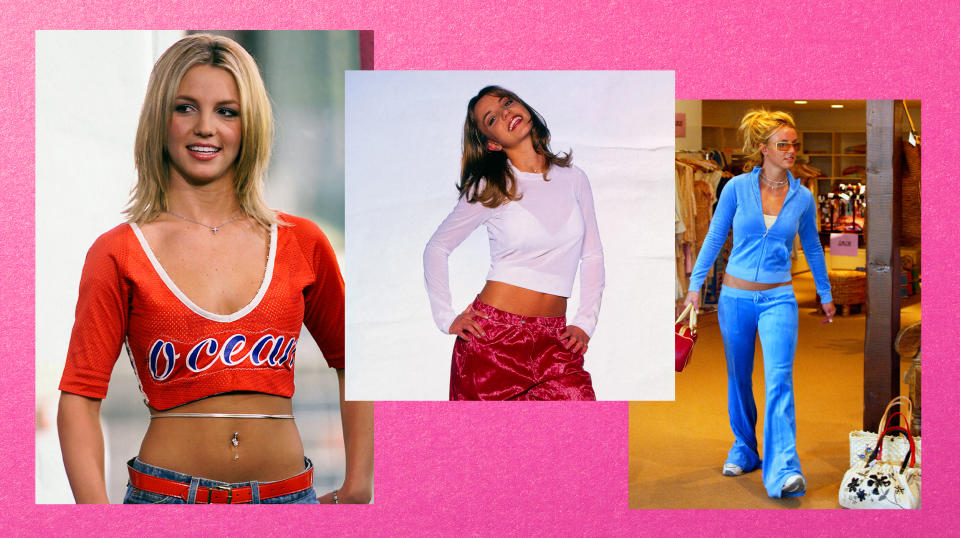2000 meets 2021: Gen Z is reviving fashion and trends from decades past
Recently, the hottest piece of jewelry among Gen Z’s favorite celebrities has nothing to do with precious stones or storied retailers.
Instead, stars like the singers, Dua Lipa, Olivia Rodrigo and the actor Pete Davidson are donning beaded necklaces, reminiscent of homemade friendship jewelry from the early 2000s, from the brand Ian Charms.

It’s part of a rising trend of Y2K fashion and what has been called “nowstalgia” among Gen Z, who are reliving early 2000s fashion trends they were too young to experience or remember the first time around.
“I think there's like this resurgence of what was so cool in the 2000s … now that it's coming back, it's like you want to infuse it with today's pop culture,” said Lisa Sahakian, CEO and founder of Ian Charms.
It’s not just beaded necklaces coming back into style. Iconic fashion trends of the early 2000s like bucket hats, low-rise jeans, and babydoll T-shirts are all having a resurgence among younger consumers. This vintage renaissance has also led to an explosion in thrifting among Gen Z, and a rise in sites that sell thrifted clothing like Depop and Poshmark.
The frenzy over thrifted clothing is starting to manifest in brick-and mortar stores, and in Manhattan’s Lower East Side two vintage thrift shops, Bowery Showroom and Rogue, have led a corner of Stanton Street to be dubbed the “TikTok Block” because of the app’s role in the rise of these Gen Z trends.
“Back in 2018, I decided on a whim to start posting on Depop. I found these vintage Skechers ... I knew someone would love them. And within an hour of me posting them, I had people fighting over them. So kind of like a switch went off at that moment, I was like, ‘OK, I have something here,’” said Emma Rogue, 25, who owns Rogue.
Depop, where Rogue says her journey to becoming a vintage seller began, has been a bastion of thrifting among Gen Z. The site has more than 30 million users, 90 percent of whom are under the age of 26, according to the platform. To date, Depop sellers have sold more than a billion dollars worth of vintage goods.
Rogue became a sensation on TikTok, showing off thrifted Y2K items on the app that she was selling on her Depop. Last year, she said a video of her packing an order on Depop went viral overnight with more than a million views on that post. Her following on the platform exploded to more than 100,000.
It was then she decided to take her business offline and into a real-life store.

Rogue credits the success of her vintage shop, in part, with the women who are driving the Y2K fashion renaissance; stars of the 2000s who are back in the spotlight, like Britney Spears and Paris Hilton.
Spears’ recent public battle over her father’s conservatorship and Hilton’s documentary detailing abuse at a school in Provo, Utah, has thrust both women back into the spotlight, and Rogue says the younger generation is devouring content and fashion related to the pair.
“So I think like the free Britney movement and Paris coming out with her documentary on Provo has brought them back to the spotlight, and Gen Z might not necessarily have grown up with them in the way people a generation older than I did grew up with them. So obviously, there's going to be some sort of curiosity and desire to figure out what Britney and Paris were like when they were younger. So they're going to do that through fashion,” Rogue said.
In addition to the pop stars of a time gone by, Gen Z’s obsession with thrifting is also part of their desire to create a future with less waste. In a consumer survey conducted by Depop, 75 percent of respondents said they buy second-hand to reduce consumption.
“Our consumption has elevated so much. I feel like with vintage, you're consuming consciously and Gen Z is now appreciating that and they're realizing that they can make a difference by consuming consciously and consuming pieces that will last for a long time,” Rogue said.

